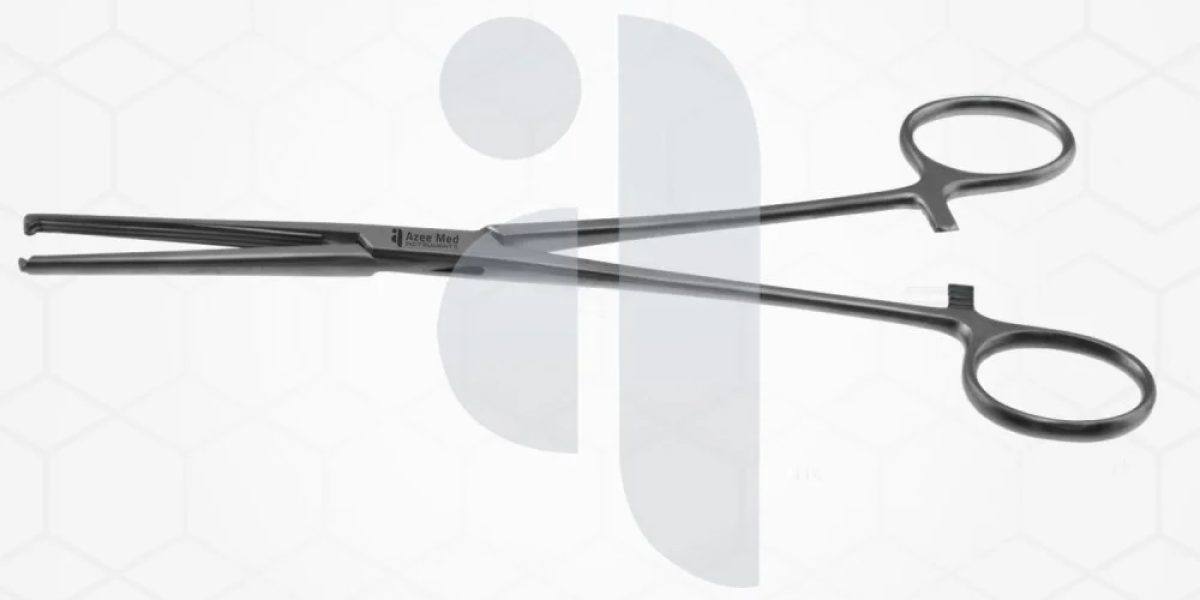When it comes to surgeries involving the gastrointestinal tract, precision and control are critical. One of the most important tools surgeons use during these procedures is the intestinal clamp. Designed to temporarily restrict the flow of contents in the intestines without causing permanent damage, this tool is indispensable in ensuring safe and effective outcomes. Whether you’re a medical professional or someone curious about how such tools facilitate complex procedures, understanding the role and functionality of intestinal clamps sheds light on their significance.
What Are Intestinal Clamps?
Intestinal clamps are specialized surgical instruments designed for use during gastrointestinal surgeries. They are typically made from high-grade stainless steel to ensure durability, sterility, and ease of cleaning. These clamps come in various shapes and designs to cater to specific needs, such as straight or curved jaws, padded surfaces, and adjustable handles for precise tension control.
The primary purpose of an intestinal clamp is to temporarily halt the flow of contents within the intestines during surgery. For example, when a surgeon is performing procedures like resections or anastomosis, the clamp helps isolate specific sections of the intestine. This prevents contamination and ensures the surgeon operates in a controlled and clean environment.
How Intestinal Clamps Work
Intestinal clamps function by gently compressing the intestinal walls, creating a temporary barrier that stops the movement of fluids, food, or waste. Most clamps are designed with atraumatic, or non-damaging, surfaces that apply just enough pressure to stop the flow without compromising the integrity of the intestinal tissue. This is crucial because excessive pressure could lead to tissue injury, which can increase the risk of complications post-surgery.
For instance, during a bowel resection, the surgeon may need to remove a section of the intestine. By placing a clamp above and below the surgical site, they can prevent spillage of intestinal contents, reducing the risk of infection in the surgical area. After the procedure is complete, the clamps are carefully removed, and normal flow is restored.
Common Types of Intestinal Clamps
There are various types of intestinal clamps, each suited for specific surgical needs. Some popular varieties include Doyen intestinal clamps, Kocher clamps, and Bainbridge clamps. Doyen clamps, for example, are crafted with flexible jaws and smooth edges, making them ideal for procedures where delicate handling of the intestine is required. Depending on the surgery, a surgeon will choose the appropriate clamp to ensure optimal results.
Additionally, technological advancements have improved clamp designs over the years, focusing on ergonomics, efficiency, and patient safety. Disposable clamps are also becoming more common, offering increased sterility and convenience.
The Importance of Proper Use
The effectiveness of an intestinal clamp depends not only on its design but also on proper handling by the surgeon. Precision is key when placing and releasing the clamp to avoid unnecessary trauma to the intestinal tissue. Surgeons receive extensive training in the use of these tools, ensuring they can manage even the most challenging cases with care and expertise.
Proper sterilization and maintenance of reusable clamps are also vital. Any compromise in cleanliness can lead to infection and other complications for the patient. For single-use clamps, safe and responsible disposal following industry guidelines is mandated.
Conclusion
Intestinal clamps play a critical role in gastrointestinal surgeries, offering surgeons the control and precision needed to perform delicate procedures. From safely isolating sections of the bowel to preventing leaks and contamination, these instruments are a testament to the advancements in medical technology. With proper use and care, intestinal clamps contribute significantly to successful surgical outcomes, ensuring both patient safety and recovery. Whether you’re a healthcare professional or someone exploring the fascinating world of surgical tools, understanding the function and impact of intestinal clamps highlights their undeniable importance in modern medicine.












